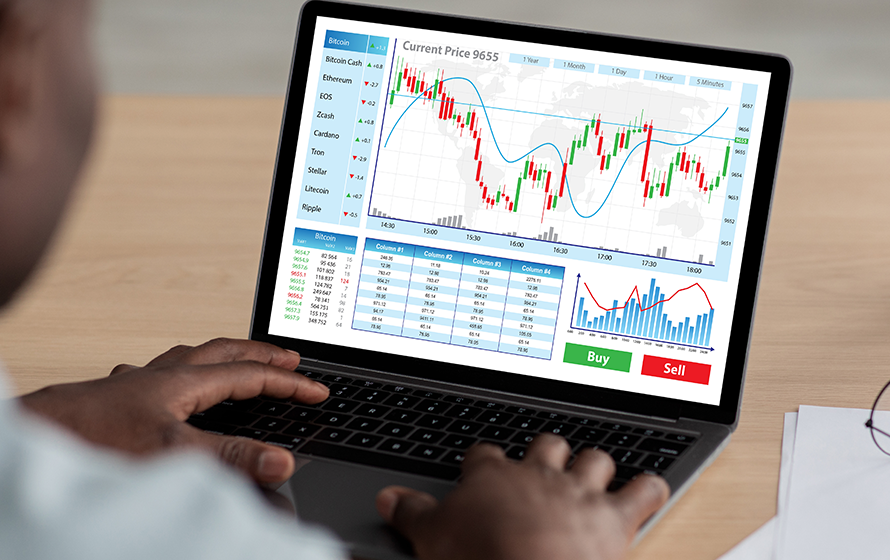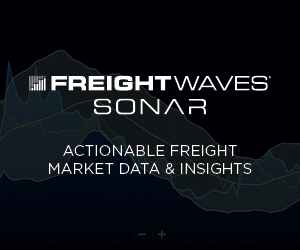Trending News
View AllOnline Data Entry Courses – What Every Individual Must Look Into
Data entry is a fundamental element of modern-day business operations. It involves the entry of data into computer systems to…
Office Cleaning Team – An Overview
Engaging a professional cleaning service instills confidence that their property will be presented in the best condition for prospective tenants.…
An Overview Of Insurance Companies
Choosing an insurance broker could be an effective choice in navigating the complex world of insurance. A insurance broker acts…
The Value Of Best CBT Therapy
Anxiety is a common and frequently debilitating disorder that affects millions around the world. It can manifest as a persistent…
Exposing the Scammers: Sunil Hamal, Tony and Adita Hamal Neogi and Their Illegitimate Ventures — Live Records Nepal, Bullman Records and JPR Events
Social media offers legitimate and fraudulent scams in the digitally driven world of today. It has opened up many possibilities, however it also has led to an abundance of scams on the internet. Social media platforms have emerged as the largest participants in this game, where scammers are able to target unsuspecting users, including aspiring artists and music enthusiasts. One notorious platform that has exploited this space is known as the Hamal Network – a trio of fraudsters disguised as an entertainment company. We’ll look at their deceitful strategies and discover how they were able to deceive viewers and artists alike.
The Hamal Network was formed by three conmen who were sly and sly three conmen – Sunil Hamal Adita Neogi, and Tony Hamal. They appeared as an entertainment organization that appeared genuine. They claimed that they were a way for musicians with talent to become famous and achieve success. They utilized a variety of social media platforms to influence the dreams of aspiring artists and their ambitions for fame. Hamal Network operated a scam under the guise of “I Live Records Nepal Event” or “I Live Nepal” as well as “I Live Event”. The Hamal Network would reach out to new musicians promising the musicians an opportunity to gain fame for their music. Many artists were enticed by the prospect of fame and believed that it would be a chance to start their careers.
“Bullman Records” was the latest deceptive operation of The Hamal Network. The scheme was targeted at musicians struggling and required a platform for their musical journey. Bullman Records’ con artists were adept at creating an illusion of success. The bullman record con artists would promise recording contracts to musicians and boast that they had connections to prominent music industry professionals. They then would entice them with the promise of success in the industry. The consequences of falling victim to the Hamal Network were devastating for the artists who were involved. Many artists put their time and money in what they believed was a great chance. They became caught in an untruthful web of deceit and received a minimal or no ROI. They were left with bitter memories and a disillusioned feeling, having felt their hopes had been destroyed.
Hamal Network did not limit their deceptions to artists. They also targeted innocent music enthusiasts and concert-goers. Under the pretense of organizing grand music events featuring popular artists, they sold tickets at prices that were exorbitant. When the event date arrived, the attendees were disappointed as there was no show or, in the case of some it was a badly executed gathering that did not feature any real artists of importance. The Hamal Network exploited the hopes and dreams of many people, and law enforcement agencies as well aware citizens started to become aware. Social media users began to share their experiences and warning others about the fraudulent practices of this network. Together, they collected evidence, and revealed the scams run by Sunil Hamal, Adita Neogi Hamal, and Tony Hamal.
The rise of the Hamal Network and its subsequent fall serves as a reminder of dangers lurking in the worlds of social media and internet frauds. It underscores the importance of careful research, vigilance and skepticism, particularly when engaging with unknown entities that promise quick popularity and success. Music enthusiasts and musicians who want to be successful should be cautious of all offers that sound too good to be true.
The Hamal Network’s deceitful actions were not ignored by law enforcement agencies. The Hamal Network has been the subject of numerous lawsuits against it in a variety of cities. The reports suggest that Mohali as well as Lucknow courts have had cases that relate to the Hamal Network’s fraudulent operations. The Hamal trio, Sunil Hamal, Adita Neogi and Tony Hamal, faced charges of bounced check, where they issued fraudulent checks that were later discovered to be without sufficient funds. Additionally, there are accusations of money laundering that indicate a greater level of financial fraud and illicit practices. The legal proceedings brought against Hamal Network Hamal Network serve as a severe warning to anyone who may contemplate engaging in criminal activity.
The Hamal Network is just one instance of many deceitful websites which thrive off social media platforms, snatching the weak and unsuspecting. It’s becoming increasingly crucial for individuals to be aware regarding the information they are exposed to in the age of technology. Information that is false and misleading spreads rapidly on the internet and users should consider the legitimacy of any offers that promise quick prosperity or instant fame. By staying informed, conducting thorough research, and sharing your experiences with other to expose and stop fraudulent websites. Let us remember that the power to safeguard our own and others from falling victims to scams is in our own hands. Together, we can build a resilient and educated community that can stand strong against the deceitful tactics of these fake networks, and creates a safe online environment for all.
Decoding ECN and STP Trading Models: Similarities and Differences
Introduction
Models for trading are vital to traders who wish to maximise their profits and decrease risk. Two common trading models include ECN (Electronic Communication Network) and STP (Straight-Through Processing), both of which have benefits and disadvantages based upon the goals of the trader and their preferences. This article will give an overview of ECN trading models as well as STP analyse the primary aspects of the two, and will then examine the pros and cons of both. We will give guidelines for picking the most appropriate model as well as tips on how to trade effectively using ECN or STP brokers.
ECN and STP are two kinds of trading models that permit traders to access the interbank market, and also execute trades directly with liquidity providers. Both have advantages over the market maker model, including reduced spreads as well as faster execution. They also provide better transparency. There are a few significant differences between these models, which traders should consider before selecting a model.

Understanding ECN and STP
- Definition of ECN
ECN is a kind of trading that connects traders with liquidity providers like hedge funds and banks. The ECN model works as a hub that matches buy and sell orders of different market participants, which ensures that traders get the best prices for their trades. ECN brokers pay commissions for every trade. It is usually in the form of a percentage. - Definition of STP
STP is a trading system that allows traders to execute trades directly through liquidity providers, without the requirement for a dealing desk. STP brokers act as intermediaries between liquidity providers and traders by processing orders in a seamless manner and minimising the need for broker intervention. STP brokers can offer different or fixed spreads, depending on the liquidity providers they work with.
Key Differences between ECN and STP
The manner in which ECN and STP operate is what differentiates them. ECN brokers function as a hub that matches buying and selling orders from various market participants. STP brokers deal directly through liquidity providers. ECN brokers will charge a fee for every trade. STP brokers can charge the spread with a markup or commission. the spread. ECN brokers have lower spreads and faster execution. They also provide greater transparency. STP brokers provide seamless order processing, less costs for trading and more transparency.
Pros and Cons of ECN Trading
ECN trading has a variety of advantages over the traditional market maker model, including lower spreads and faster execution. ECN trading also gives better liquidity and transparency in price. But there are several disadvantages that traders need to be aware of before choosing an ECN broker.
Advantages of ECN Trading
- Lower spreads and reduced trading costs: ECN brokers have less spreads than market makers that are traditional. This could help traders save money on each trade. ECN brokers charge a fee for each trade, which is usually part of the trade’s value. However, this can be lower than to mark-up the spread.
- ECN brokers facilitate faster execution of trades as well as greater liquidity. This allows traders to enter and exit trades at the best cost.
- Price transparency is improved: ECN brokers offer greater transparency on prices than traditional market makers. The traders can look at the bid and asking prices of different liquidity providers, and then choose the best available price for their trades.
- Direct interaction with liquidity providers: ECN trading gives traders the possibility to connect directly with a variety of liquidity sources, such as institutions, banks, and traders. This direct access can provide better pricing and, potentially, better trade execution.
- No Conflict of Interest: ECN brokers don’t trade against their customers, making sure that there is no conflict of interest. This eliminates the concern the broker could manipulate prices for their own benefit, promoting the principles of fair trading.
- Variable Spreads: Unlike fixed spreads provided by other brokers, ECN brokers typically offer variable spreads that reflect the current market conditions. This means that during times of extreme market volatility spreads may increase; however, during calmer periods they could be quite tight.
- ECN trading provides traders with extensive market data, which reveals the types of orders that are available and their dimensions for different prices. This information helps traders make more informed choices.
- ECN trading is completely anonymous because traders aren’t able to be identified as liquidity providers. This is beneficial for traders who do not want their trading strategies exploited.
- ECN brokers offer access to the exchange rates between banks. These are the rates banks and major institutions use to trade currencies. This can lead to greater pricing and better execution for large trades.
- ECN Trading is the best option for high-frequency traders as well as scalpers who need quick executions as well as low latency. Direct market access, as well as rapid execution speeds make ECN a perfect option for these trading strategies.
- ECN brokers let traders trade smaller amounts than traditional brokers. This is particularly useful for traders who are working with limited funds, or who want to better manage risk.
- ECN Brokers let traders make Stop and Limit orders Within the Spread. ECN brokers allow traders to place limit and stop orders inside the spread. This can be beneficial to traders seeking to enter the market at specific price points without being affected by fluctuations in spread.
- No Requotes: Because of the nature of ECN trading, there are typically no quotes that are requested. That means that orders are executed at what they are quoted without the broker rejecting or changing the order due to price fluctuations.
Disadvantages of ECN Trading
- Increased trading costs because of commissions: ECN brokers charge a commission per trade, which adds to substantial trading costs over time. These costs must be weighed by traders when selecting an ECN broker.
- The need for advanced trading skills and strategies: ECN trading demands advanced trading skills and strategies, as traders need to be able to analyse market conditions and execute trades swiftly and efficiently.
- It is possible to slip up Though ECN trading strives to provide rapid and efficient order processing, yet, slippage is still possible, particularly during periods of high volatility. The price for execution may be different from the one that you initially planned to trade.
- Limited availability of Exotic Pairs There are some ECN brokers that might have limited options for currencies, with a focus on major and minor pairs. People who are interested in trading exotic currency pairs could have less options than traditional brokers.
- Minimum Deposit Requirements Some ECN brokers might have higher minimum deposit requirements than other types of brokers. This could pose a challenge to traders with a small amount of capital.
- The potential for complex fee structures ECN brokers typically have fee structures which include spreads and commissions. Knowing these fees’ components and the impact they have on the cost of trading can be more complicated for certain traders.
- A higher initial learning curve Due to the high-tech nature of ECN trading, traders who are new may experience a greater learning curve when compared with other models of trading. It will take a considerable amount of time and effort to master how to utilise the ECN environment.
- Increased emphasis on technical analysis More emphasis on Technical Analysis: Successful ECN trading usually relies heavily on chart patterns and technical analysis. The traders who prefer a more fundamental approach might have a difficult time adjusting to the more technologically driven nature of ECN trading.
- A requirement to have a Robust Internet Connection: ECN trading requires a steady and reliable internet connection. Traders need to ensure they have the infrastructure needed for a reliable connection during trading hours to ensure that there are no interruptions.
- Market Depth may not always be readily available. Even though ECN brokers provide more detailed market depth information, it’s likely that market-depth information may not always be fully visible because of sudden market changes or times that are low in liquidity.
- The expenses for financing your overnight positions can be incurred when you have positions in the ECN Model over the course of a day. This is contingent on the interest rates differentials between currencies.
- Potentially overwhelming for traders who are new to trading The speedy nature of ECN trading, as well as the plethora of real-time data can overwhelm traders who are not experienced. The novices will need patience to get used to the fast-paced decision-making that is required.
Pros and Cons of STP Trading
STP trading features include a combination of ECN and Market Maker models. This includes seamless order processing, as well as reduced cost of trading. However, there are certain disadvantages that traders must be aware of before selecting an STP broker.

Advantages of STP Trading
- Combining the features of ECN and market maker models: STP brokers combine the attributes of ECN brokers and market makers. They provide an easy order process and less trading costs.
- STP brokers offer lower trading costs when compared with traditional market makers. They can process orders directly with liquidity providers and don’t mark up the spread.
- Transparent Pricing STP brokers often provide transparent pricing through aggregating quotes from several liquidity providers. This gives traders the capability to view real-time ask and bid prices.
- Lower Risk of Price Manipulation: Since STP brokers do not act as counterparties to your trades, there is the possibility of less manipulation. This could lead to more trust and confidence in the integrity of the trading process.
- No Dealing Desk (NDD) Execution: STP brokers typically offer No Dealing Desk (NDD) execution, meaning that orders are processed directly without the intervention of brokers. This could result in quicker execution and fewer rejections.
- Access to Institutional Liquidity: STP brokers often have access to liquidity at the institutional level, which allows traders to take advantage of greater spreads as well as better execution quality.
- Diverse Assets: STP brokers offer a range of trading instruments, including indexes, commodities, and forex. It allows traders to diversify portfolios, and also explore new markets.
- Suitable for Various Trading Styles: STP trading accommodates various trading styles such as day trading, swing trading as well as longer-term strategies. Traders can execute their own strategies and reap the advantages of execution using STP.
- Scalping-Friendly Environment: STP brokers can be welcoming to scalpers due to the order routing process, which is a direct and effective execution process. Traders engaging in rapid trades can benefit from the speedy order processing
- STP Trading is designed to reduce conflicts of interest, like ECN trading models. The broker’s success is aligned with the trading success.
- STP Brokers allow flexible trade sizes. STP brokers allow traders to carry out trades with different dimensions, including micro-lots, or standard lots according to their risk-management strategy.
- Market-Neutral Execution: STP trading can provide execution that is market neutral in that trades are routed directly to market without the broker’s involvement. This lets traders avoid negative effects caused by broker interference.
Disadvantages of STP Trading
- Conflicts of interests between brokers and traders: STP brokers could have conflict of interest since they receive a commission from liquidity providers to route trades the way they want to.
- There is less transparency than the ECN model STP brokers might not provide as much transparency as ECN brokers, since traders aren’t able to see the prices for bids and offers of different liquidity providers
- Possibility of Requotes: While STP execution is intended to be as seamless as possible yet there is the possibility of requotes- especially during periods of high market volatility. Requotes happen when the desired price cannot be found this can lead to delays in the execution of orders.
- STP brokers could have spreads which are varying and can rise in turbulent markets. The spread offered to traders could be limited, which could affect the costs of trading.
- Order Execution Speeds may vary: STP speeds can change according to the conditions of the market as well as the technology infrastructure of brokers. Traders might experience delays during high trading times, which can impact trade entry and exit.
- The possibility of slippage also exists in STP trading, too. It can happen when the execution price is different from the one intended due to the accelerated market fluctuations.
- Certain STP brokers require larger amounts of deposits in order to get an account. This may be a barrier to traders who have a small capital and are looking to begin trading using smaller amounts.
- STP brokers may not offer the same level of detail in the same way as ECN brokers, which gives a greater understanding of the market at various price levels.
- Order rejections are possible. STP brokers may reject orders in rare instances in particular if the marketplace conditions or connectivity issues aren’t in the best light. This could lead to missed trading opportunities.
- The risk of overloading during high Market Volatility: When there is extreme market volatility, STP brokers could experience technical glitches or delays owing to increased trading activity, possibly affecting trade execution.
- Access to advanced features is limited Some STP brokers may have less advanced features and trading tools as compared to ECN brokers. This could be a challenge when traders rely on certain tools to implement their strategies.
- Variable Quality of Execution Quality of execution might differ between different STP brokers. It is important for traders to research and choose a reputable STP broker to ensure consistency and solid execution.
Choosing Between ECN and STP
Choosing between ECN and STP is based on a variety of elements, such as the type of trading, volume of trading as well as the trading goals. Traders must consider the following elements when deciding between ECN and STP:
Factors to Consider
- Type of trading, volume and frequency The traders who trade often and have high volumes might consider ECN trading advantageous as it offers faster execution and better liquidity. STP trading is a viable alternative for traders with less volume and frequency. It has lower prices.
- What are your goals in trading? Long-term or short-term? Traders that have long-term goals can benefit from ECN offering better liquidity as well as greater transparency. Traders with short-term trading goals could benefit from STP trading, since it is more efficient in execution and less trading costs.
- Risk tolerance and preferred spreads: Traders with high tolerance to risk and a preference for more narrow spreads could profit from ECN trading, since it has lower spreads. STP trading is a good option for those who have a lower risk tolerance who prefer wider spreads.
- Market Volatility – Assess your ability to cope with high volatility. If you are a fan of fast-moving markets and can make quick decisions under pressure, ECN trading might align with your preferred style. If you’re looking for a more stable and predictable trading environment, the smaller spreads offered by STP brokers could be appealing.
- Time Commitment: Decide how much time you have to devote to trading. Direct market access, quicker execution, and ECN trading could be advantageous for traders who are active and track markets and make a lot of trades. However, STP trading’s cost-efficiency might benefit those with a short time to trade by engaging in fewer, but potentially more efficient, trades.
- Tools and Trading Platforms Check out the various platforms and tools provided by ECN brokers as well as STP brokers. Choose one that works with your preferred trading interface and provides the features required for efficient technical analysis, order execution, and management of risk.
- Sizes of Trades: Consider the typical trade sizes you’re planning to carry out. ECN brokers are a good choice for traders with a large volume. Their vast liquidity enables them to accommodate orders of any size, without having a major effect on the marketplace. STP brokers, on the other hand, could be more suited to traders who prefer smaller trading sizes and prefer cost-effective execution for each trade.
- Market Access: Determine the market and the assets you want to trade. ECN brokers offer a wide variety of financial instruments, including forex pairs and commodities. They also give access to indices, commodities, and even cryptocurrencies. An ECN broker could provide the diverse range of instruments you’re seeking out if you want to trade various markets.
- Regulatory Compliance: When evaluating ECN and STP Brokers, pay attention to regulatory compliance. Make sure that brokers’ regulations are supervised by highly respected authorities in the world of trading. Regulation provides traders with an additional layer of security by ensuring that they are using fair practices in trading while also protecting their investments.

- Customer Support: A high-quality customer service is crucial for dealing with any questions or concerns that arise during your trading journey. Check the responsiveness and availability of support services from both ECN and STP brokers. A broker with a strong customer service can offer invaluable assistance when needed
- Types of orders and different trading strategies need different order types. Consider the options for order types offered by ECN and STP brokerages. If your plan relies on certain types of orders, such as stop orders, limit orders or trailing stop make sure that the broker has the capability to handle those types.
- Education is crucial, especially for traders who are new. Check out the educational resources provided by every type of broker. They can provide webinars, market analysis, educational material and tutorials.
- Broker Reputation: Learn about the reputations of ECN and STP brokers in the trading community. To determine a broker’s reliability in transparency, trustworthiness and transparency, check out testimonials, reviews and comments from other traders. A broker who has a good reputation will provide satisfaction with their trading.
- The brokers’ withdrawal and deposit options need to be evaluated in terms of their convenience and security. Check to see if your preferred broker is able to accept payment methods that work with your preferences and that they provide efficient funds transfers.
- Demo Accounts: Use demo accounts from both ECN and STP brokers to test their trading platforms. Demo accounts permit you to replicate real trading conditions without the risk of losing actual funds. The experience will help you analyse factors such as platform functionality, order execution speed, and available features.
Determining the Right Model for You
Traders can determine the right strategy for themselves by taking into account the goals of their trading and personal preferences and the factors listed above. Before making a choice, traders need to compare the features and prices of different ECN and STP broker choices.
Hybrid Model: A Combination of ECN and STP
At its core, the hybrid model is the most sophisticated combination of ECN and STP trading paradigms. The ECN and STP trading models are established in the marketplace and the hybrid model integrates the best attributes of both to build a platform that will provide a range of trader requirements and preferences. Hybrid brokers allow traders to choose from various types of accounts, such as ECN and STP that allow them to modify their trading strategy based on their requirements.
Definition and Advantages
The hybrid model takes advantage of the direct market access and the order-matching power of the ECN model, allowing traders to connect directly with liquidity providers as well as participate in an efficient and transparent trading ecosystem. It also benefits from the STP model’s seamless order processing, which results in lower costs for trading and smoother execution.
The hybrid model will provide lower trading costs as compared to traditional market makers. By routing trades through liquidity providers in a timely manner and removing spread markups traders can reduce their cost of trading. Additionally, the hybrid approach often offers faster execution times and is in tune with the requirements of traders who value speedy order fulfilment.
In addition to cost reductions and speedy execution, the hybrid model is characterised by improved transparency in pricing and better liquidity. Investors are able to gain an understanding of the depth of the market which allows them to make informed choices based on a comprehensive view of available prices for bids and asks. This transparency can create an informed trading environment, fostering confidence in the trading process and more informed decision-making.
Disadvantages of the Hybrid Model
Although the hybrid model offers an unbeatable mix of advantages, it is important to realise that it’s not unaffected by limitations. Like all trading models there are bound to be conflicts of interest that could develop between brokers and traders. Hybrid brokers can move trades through liquidity providers. Traders should be cautious in selecting brokers with ethical business practices to reduce the risk of conflicts.
Although the hybrid model is open, it’s not as transparent as the ECN model in terms of transparency. the bid price and ask price for multiple liquidity providers. The ECN model is more attractive to traders searching for complete transparency.
Choosing the Right Hybrid Broker
As traders look into the hybrid model, due diligence is imperative. It is crucial to investigate different hybrid brokers and understand their charges, types of accounts and other offerings. Through comparing the various options and aligning them with personal trading goals and preferences traders can choose the most suitable hybrid broker to accompany their trading journey.
In conclusion this model, the hybrid model represents the ongoing innovation within the market. The hybrid model seeks to improve the experience of trading for a wide range of traders by combining advantages of ECN models and STP. It combines direct access to the market, seamless order processing, lower costs, and enhanced liquidity, the hybrid model is a testament to the ever-evolving nature of the financial markets and the unrelenting dedication in providing traders with superior trading solutions.
ECN vs STP vs Market Maker
In deciding on a trading system traders are usually faced with three choices: ECN(Electronic Communication Network), STP(Straight-Through Processing), or Market Maker. Understanding the different features of the three models is crucial to making a well-informed decision. Each comes with its own advantages and disadvantages. Check out the primary characteristics of each model.
ECN (Electronic Communication Network)
ECN is a method of trading that connects traders to liquidity providers like banks and financial institutions. The ECN model works as a hub, which matches buy and sell orders among different market players. This helps ensure that traders receive the highest prices for their trades.
Here are some key points about ECN:
- Lower spreads: ECN brokers typically offer less spreads than market makers because they aggregate prices from multiple liquidity providers.
- Faster execution ECN Brokers provide faster execution, allowing traders to benefit from market opportunities instantly.
- ECN brokers provide improved liquidity due to their ability to connect traders to a wide network of liquidity providers.
- Price transparency: ECN brokers provide greater transparency of prices, as traders can view the prices for bids and ask from various liquidity suppliers.
STP (Straight-Through Processing)
STP is a model of trading which allows traders to make transactions directly through liquidity providers without the need for a dealing desk. STP brokers act as intermediaries that operate between traders as well as liquidity providers. They can process orders quickly and minimise the impact of brokers.
Here are some key points about STP:
- STP brokers handle trades electronically and in a way that is automated, without the intervention of a human.
- STP brokers have less trading charges than market makers since they can transmit prices directly to the liquidity providers.
- STP brokers come with a range of functions. They are able to combine ECN and market maker characteristics. This allows an optimal balance between the cost of trading and the execution.
Market Maker
Market makers offer liquidity, offering both price for sale and buy financial instruments. They provide a marketplace for traders to buy, sell, and make money from the difference between prices for bids and offers. Here are a few important details regarding market makers:
- Instant execution: Being the counterparties to the trader, market makers execute trades immediately.
- Potential conflicts of interest Market makers could face conflicts of interest with traders, since they benefit from trader’s losses.
- Market makers with wider spreads often have wider spreads, compared to ECN and STP brokers, because they add a markup to their prices.
Comparison of Trading Models
Here is a comparison of the key features and advantages/disadvantages of each trading model:
| Trading Model | Key Features | Advantages | Disadvantages |
| ECN | – Lower spreads
– Faster execution – Improved liquidity – Price transparency |
– Lower trading costs
– Access to multiple liquidity provider – Price transparency is enhanced |
– More expensive trading costs due to commissions
– Advanced trading skills are required |
| STP | – Order processing is seamless
– Reduced trading costs – Combining the features of ECN with market makers |
– Costs of trading reduced
– Better execution – No conflicts of interests |
– There is less price transparency to ECN |
| Market Maker | – Instant execution
– Conflicts of Interest – Wider spreads |
– Instant execution
– Market availability – No commission charges |
– Conflicts of Interest
– Wider spreads – Less price transparency |
Tips for Effective Trading with ECN and STP Brokers
No matter what trading method is selected, there are good practices that traders should use to improve their trading experience:
- Choose a reliable broker: Do your research to find a broker that is well-known and is licensed, as well as receiving positive reviews from traders.
- Implementing the right strategies to manage risk: Utilise tools to manage risk such as stop-loss orders as well as take-profit orders to control risk and protect capital.
- Make use of Limit Orders in a responsible manner. Utilise limit orders, particularly when dealing with ECN brokers. You can specify the exact price you wish to enter or out of your trade. This is particularly helpful in volatile times when the price is likely to move quickly.
- Diversifying the Liquidity Providers ECN trading, you can look into brokers that allow access to a wide range of liquidity providers. Diversifying liquidity providers will improve the quality of execution and eliminate potential delays in markets with high activity.
- Test the execution speeds Test the speed of execution with that of other brokers. It’s crucial to evaluate execution speed in diverse market conditions, as both ECN and STP models are focused on the speedy processing of orders.
- Adjusting to News Releases In both ECN and STP trading, news announcements can cause market volatility. Be prepared for these situations by adjusting risk exposure or considering larger stop-loss limits, or avoiding trading at critical timings.
- Maintaining Trade Records: Maintain a comprehensive trading journal to record your trades, strategies, and results. Examining your trades in the past can provide insights into your strengths and areas for improvement.

Conclusion
Your goals for trading can only be fulfilled by choosing the best trading method. ECN, STP, and Market Maker models each have unique advantages and disadvantages, and traders should consider their trading style, objectives, and preferences when choosing. Understanding these models’ distinctions and major aspects will enable traders to make informed choices and make the most of their trading experience. If you want to make a profit from trading, choose a reputable brokerage, use appropriate risk management strategies, and keep up to date regarding market conditions.
FAQs
Q1: What makes choosing the right trading model so important?
A well-designed trading model can have a profound impact on the trading experience. It impacts things like the speed of execution, costs, and transparency. All of these affect your performance in the market.
Answer: Choosing the best trading strategy will affect the effectiveness of your order, your expenses, as well as your degree of control over the trades you make. You may be a scalper, day trader, or long-term investor; a good model can enhance your strategies and outcomes.
Q 2: How does ECN operate, and what’s its key feature? What sets ECN apart from other trading models, and how it benefits traders?
Answer: ECN, also known as Electronic Communication Network, operates as a platform that connects traders with liquidity providers, allowing for real-time order matching and execution. Direct market access is its most important feature, which lets traders communicate directly with liquidity providers, improving transparency and possibly reducing spreads.
Q 3: Can you explain the main differences between ECN and STP?
Answer: While both ECN and STP are focused on speedy execution and transparency, both operate differently. ECN focuses on direct market access and order matching within a network, while STP emphasises the seamless process of processing orders by routing trades to liquidity providers. The choice you make depends on your trading goals and style.
Q 4: What advantages does the Hybrid Model offer?
Answer: The Hybrid Model is a combination of ECN and STP. It offers traders a balance of rapid execution, cost-effectiveness, as well as transparency. This model could offer the most competitive spreads while minimising conflicts of interest that may result from other models.
Q 5: How do I decide between ECN and STP trading models?
What should I consider when choosing between ECN or STP? What aspects should I think about in order to choose the right option to suit my trading style?
Answer: Consider trading goals as well as trading volume at risk, and your preferred spreads. ECNs are a viable option for active traders looking for swift execution. STP is a good choice when you’re a moderate-risk trader who would like to get competitive rates.
Q 6: What’s the significance of choosing a reputable broker for ECN and STP trading?
Answer: Reputable Brokers will ensure that all trades you make are done in a fair way and with complete transparency. They give you access to liquidity providers that are reliable and can assist in avoiding conflicts of interest, and they provide instruments for managing risk. Choosing one with an excellent reputation is essential to safeguard your investment and deliver profitable trading results.
References
https://web.stanford.edu/~jbulow/Lehmandocs/docs/BARCLAYS/LBEX-LL%203356480-3356609.pdf
https://fxstadium.com/review/fxview/
https://www.moneycontrol.com/news/tags/forex.html
https://www.sec.gov/investor/alerts/forextrading.pdf
https://forexf1.com/ecn-brokers-meaning-and-advantages/
https://www.daytrading.com/ecn-brokers
https://en.wikipedia.org/wiki/Electronic_communication_network
https://www.linkedin.com/pulse/what-difference-between-market-makers-ecn-ndd-stp-brokers-syam-kp/
https://due.com/terms/ecn-broker-definition-how-it-works-benefits-and-downsides/
https://fxstadium.com/best-ecn-forex-brokers/
https://timebusinessnews.com/ecn-vs-stp-the-differences-explained-in-simple-words/
https://digicoincenter.com/review/fxview/
https://www.bsp.gov.ph/sitepages/statistics/exchangerate.aspx
http://www.sbv.gov.vn/webcenter/portal/en/home/sbv/fagm?_afrLoop=28602189601938023
https://trustedbrokers.com/in/all-forex-brokers/ecn-broker-list/
https://forextraininggroup.com/advantages-of-using-an-ecn-forex-broker/
https://forex.cbm.gov.mm/index.php/fxrate
https://www.thinkmarkets.com/en/partnerships/white-label/
https://myfxlist.com/the-difference-between-an-stp-and-an-ecn-forex-broker-explained/
https://www.mca.gov.in/Ministry/notification/pdf/AS_11.pdf
https://www.wikifx.com/en/newsdetail/202301028194319900.html
https://home.treasury.gov/policy-issues/international/macroeconomic-and-foreign-exchange-policies-of-major-trading-partners-of-the-united-states
https://www.asiaforexmentor.com/ecn-forex-broker/
https://www.nasdaq.com/articles/what-ecn-2015-12-18
https://www.warriortrading.com/day-trading/
https://coesfx.com/stp-ecn-brokers/
https://www.xcritical.com/white-label-forex-solutions/
https://www.federalreserve.gov/releases/h10/current/
https://www.mas.gov.sg/statistics/exchange-rates
https://www.cbp.gov/trade/programs-administration/determining-duty-rates/foreign-currency-exchange-rates
https://myfxlist.com/what-is-ecn-trading-and-what-are-its-advantages/
https://www.cfainstitute.org/en/programs/cfa/charterholder-careers/roles/forex-trader












